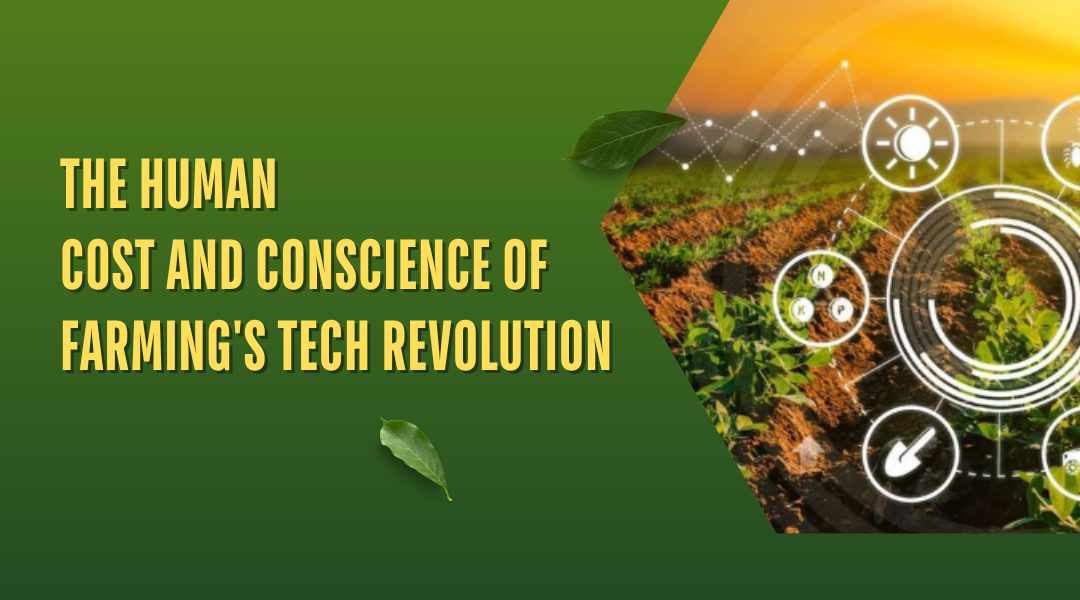As fields go digital and algorithms begin to advise on everything from planting to harvest, a crucial conversation is emerging. It’s not just about yield and efficiency; it’s about the soul of agriculture itself. The push towards smart farming is forcing us to ask: as we innovate, what values are we sowing alongside our seeds?
The Social Landscape: More Than Just Jobs
The image of a farmer on a tractor is an enduring symbol of rural life. But what happens when the tractor drives itself? The fear of job loss is real and warranted. Automated harvesters and drone scouts don’t call in sick, creating anxiety that human workers might be phased out, leaving rural economies struggling.
However, the story isn’t just about replacement; it’s about transformation. The real challenge—and opportunity—lies in retraining. We need to equip a new generation with the skills to manage these systems, to become data interpreters, drone pilots, and robotics technicians. The goal isn’t a people-less farm, but a smarter one where human expertise is elevated, not erased.
Beyond employment, a new “digital divide” is taking root. A large, corporate farm can easily invest in a fleet of AI-powered sensors, while a small, family-run operation might be priced out. This risks creating a two-tier system where only the biggest players can access the tools for maximum efficiency and profit, potentially squeezing out smaller, traditional farms.
Imagine this: A fifth-generation dairy farmer watches as a neighboring mega-farm installs an AI system that optimizes feed for each cow, boosting milk production by 15%. Without access to the same capital and technology, the family farm struggles to compete on price, threatening a way of life that has endured for decades.
The Ethical Minefield: Data, Bias, and the Environment
The ethical questions run even deeper than the social ones.
1. Who Owns the Farm’s Data?
Modern farms generate a treasure trove of data: soil moisture levels, crop health images, yield maps. This information is incredibly sensitive. If a company’s AI is analyzing your field to recommend fertilizer, who owns that insight? Could that data be sold to commodities traders or used against the farmer in a future land deal? Robust data privacy isn’t a technicality; it’s a matter of sovereignty for the farmer.
2. The “Black Box” Problem.
Many AI systems are inscrutable. They spit out a recommendation—”spray this patch here”—without a clear, understandable reason. This “black box” problem erodes trust. A farmer’s intuition, built over a lifetime, is suddenly overruled by an algorithm that can’t explain itself. When a decision goes wrong, who is accountable? The farmer who followed the advice, or the company that designed the opaque system?
3. Unintended Environmental Consequences.
AI promises a greener agriculture, for instance, by targeting pesticides with sniper-like precision instead of blanketing a field. But what if the algorithm is trained on flawed data? It could inadvertently learn to target not just the pest, but also the habitat of a crucial pollinator like the native bee, causing cascading damage to the local ecosystem. The promise of sustainability could be undermined by hidden biases we don’t catch until it’s too late.
Navigating the Rulebook: Policy in a Fast-Moving World
Regulators are scrambling to keep up. Laws written for the age of the tractor and combine are ill-suited for the age of the algorithm.
- Data as a Crop: We need new regulations that treat farm data like a valuable harvest, giving farmers clear ownership and control over how it’s used and shared.
- Algorithmic Accountability: Policy must demand transparency. If an AI recommends a course of action, there must be a way to audit its logic, ensuring it’s safe, fair, and environmentally sound.
- Bridging the Divide: Governments and cooperatives have a role to play in ensuring access. This could mean grants for small farmers, or developing open-source, affordable AI tools that prevent the technology from becoming a luxury good.
Consider a real-world dilemma: A new AI-powered irrigation system is proven to cut water use by 25%—a boon in a drought-stricken region. However, its high cost means only wealthy agribusiness can afford it, potentially giving them an unfair advantage in water rights over smaller, ecologically-minded farms. Regulation must step in to manage these trade-offs between innovation and equity.
Conclusion: Cultivating a Responsible Future
The integration of artificial intelligence into agriculture is not a simple question of good or bad. It is a powerful tool, and like any tool, its impact depends entirely on the hands that wield it and the conscience that guides it.
The path forward requires a collective effort. Farmers, tech developers, ethicists, and policymakers must come together to write a new contract for the digital farm. We must build systems that are transparent, equitable, and accountable. The goal cannot be mere efficiency. It must be a future where technology strengthens, rather than severs, the connection between the land, the farmer, and the community, ensuring that the fields of tomorrow are not only more productive but also more just and sustainable for all.
